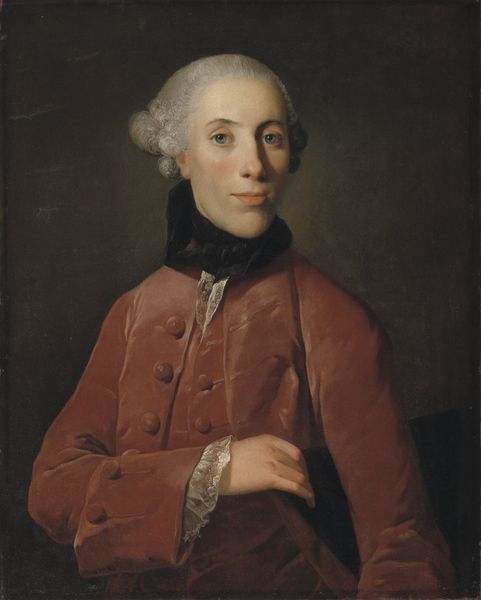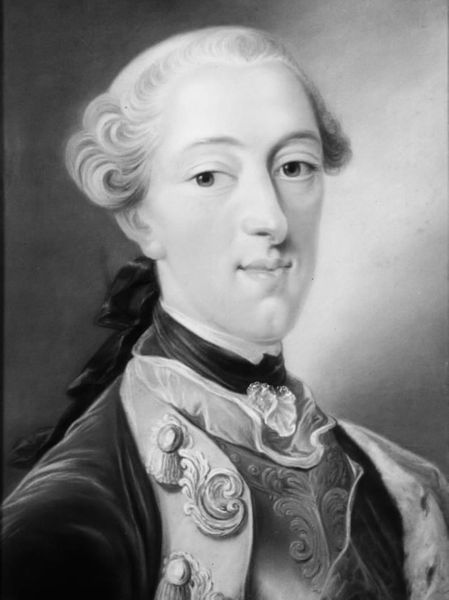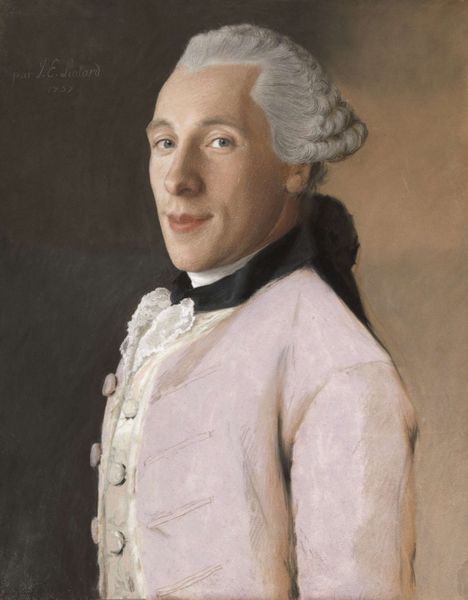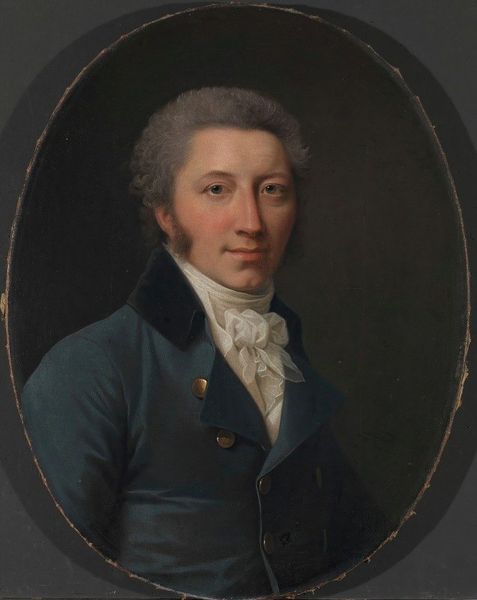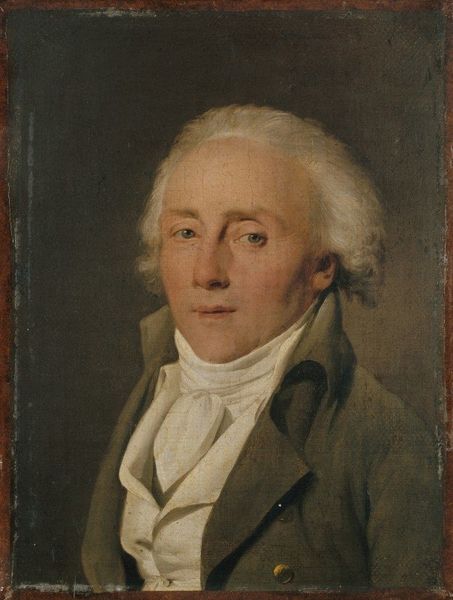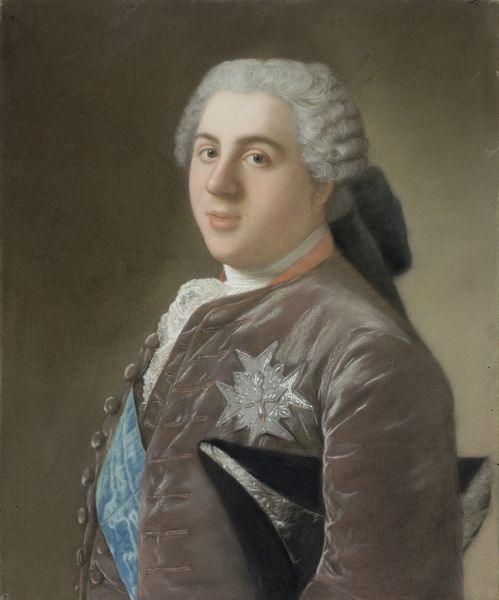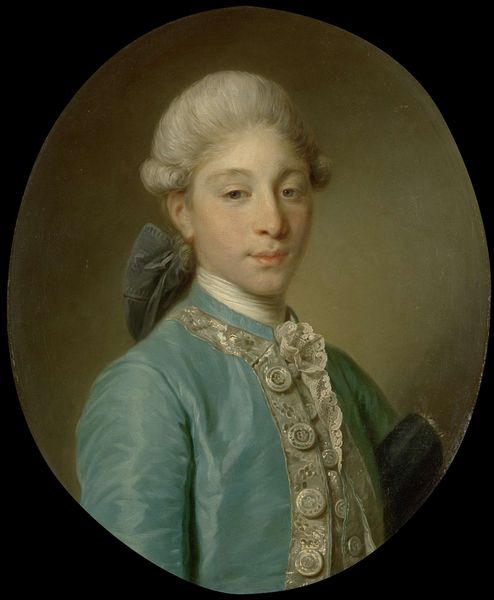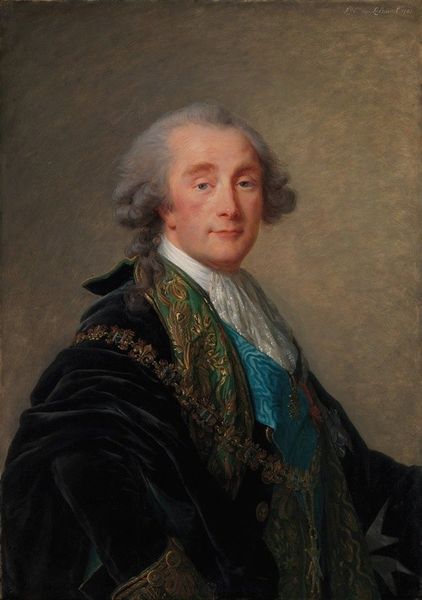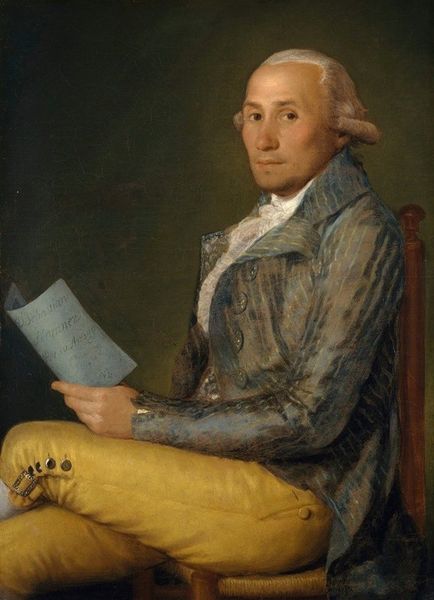
painting, oil-paint
#
portrait
#
portrait
#
painting
#
oil-paint
#
history-painting
#
rococo
Dimensions: overall: 65.4 x 91.4 cm (25 3/4 x 36 in.) framed: 74.9 x 66 x 5.1 cm (29 1/2 x 26 x 2 in.)
Copyright: National Gallery of Art: CC0 1.0
Curator: Let’s talk about this eighteenth-century portrait, currently titled "Portrait of a Man," oil on canvas and rendered anonymously. Editor: It's surprisingly gentle, wouldn't you agree? His gaze seems… well, almost amiable. It disrupts my preconceived notions about 18th-century aristocratic portraiture. Curator: I think what might surprise a contemporary viewer is the subject’s seemingly unguarded expression. These portraits served specific purposes within the structures of class and power, and the image itself, particularly its public display, contributed to that structure. What are the power dynamics here? Where does it reflect Rococo values? Editor: Well, to your last point first, observe that gorgeous turquoise jacket and lace! Rococo embraced excess and elaborate detail, serving aristocratic visual culture; consider the art’s intersectionality and gender. Is there a performative element? Certainly the subject projects male confidence in the patriarchal structure; but perhaps in the finery, he's actively performing or even subverting a gender role. He dares to challenge the boundaries! Curator: I'd agree with that to a point. However, what of his potential participation in maintaining societal norms via portraiture, particularly one produced and consumed within a specific social stratum? Editor: Precisely my question. He upholds, subverts, is indifferent: those options must remain open and, indeed, be confronted in a responsible dialogue, keeping race, class and gender as axes. But this analysis must acknowledge context and not simply judge an era. That portrait also captures, indelibly, something as intimate as… tenderness, challenging assumptions on how identities or their intersectionalities in art once must or should be depicted. Curator: Well, thank you for highlighting a need to situate ourselves within broader intersectional narratives to enhance appreciation and, more importantly, our understanding of art and society's relationship, wouldn't you say? Editor: A necessary framework for analysis. A lovely painting.
Comments
No comments
Be the first to comment and join the conversation on the ultimate creative platform.
